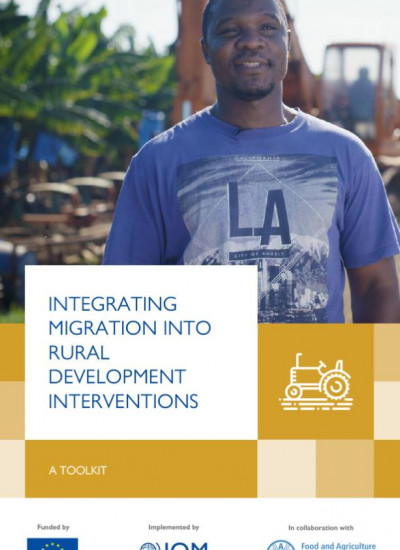The COVID-19 pandemic had a major impact on food security; around 150 million more people faced hunger in 2021 compared to 2019. Projections estimate that by 2030, around 670 million people will be facing hunger. This is 8% of the world’s population.
The impacts of hunger on migration are multidimensional. Food security can constitute a barrier and a driver of migration. Some studies show that food-insecure households have a higher probability to migrate compared to food-secure households. Migration can reduce pressure on households to provide for many family members, meaning fewer mouths to feed, and women may have more decision-making power over family nutrition as men migrate abroad. Remittances may also increase household resilience to economic shocks, keeping those most at risk from going hungry.
On the other hand, poverty and food-insecurity may constrain mobility as they reduce resources and opportunities to migrate. Displaced people including, Internally Displaced Persons (IDPs), those living in slums or refugee camps, and other mobile people in vulnerable situations may also have less and unequal access to healthy food. For example, in 2019, 4 in 5 displaced persons lived in a country with high levels of acute food insecurity and malnutrition, and 9 in 10 countries with the largest number of IDPs experienced a major food crisis (IOM).
Migrants are often key agricultural workers throughout the world, getting food on our tables. Migrants make up a disproportionate share of seasonal farm and agricultural workers, fruit pickers, store owners and food stall operators, food transporters and warehouse operatives, etc. In Italy alone, 27% of the documented agricultural workforce are migrants (European Parliament). Many countries have specific employment visas for these key sectors, and food chains rely on mobility.
But the links between hunger and migration don’t stop there. They are context-specific but often cross-cutting with other sectoral areas such as:
-
Environment and climate change: Rural communities are particularly vulnerable to the consequences of climate change which can cause crop failure and famines. Climate impacts exacerbate economic, political and social instability and may increase the risk of hunger, causing people to migrate out of necessity. However, when enabling conditions exist, migrants’ skills and social and financial capital can support sustainable land management practices, disaster preparedness and remittances to combat food insecurity. (In line with SDGs 1, 6, 7, 9, 13, 14 and 15)
-
Health: Hunger and malnutrition are fundamentally a health problem and can lead to long-term health consequences, especially for children. Vulnerable communities, including the displaced, are most at risk. Migration can increase the work burden of the family members who remain behind, reduce the time and quality of childcare and ultimately affect nutrition. (In line with SDGs 3, 5, 8 and 10)
-
Rural Development: Rural communities and livelihoods are food-producing centers for large parts of our world. Disasters in rural environments can cause a rapid decrease in our food supply, and globalization means that food shortages in one community can have consequences in another. Rural development may be facilitated by channelling skills, innovation and remittances gained from mobility into climate-adaptive and sustainable farming, protecting food security. (In line with SDGs 1, 8, 10, 13 and 15)
-
Employment: Many migrants and displaced persons contribute directly to food systems by filling labor shortages. But hunger, unemployment and underemployment may drive migration, particularly of youth. These employment areas are also rife with exploitation, trafficking and other protection concerns. (In line with SDGs 5, 8, 9 and 10)
-
Urban Development: As a large proportion of migrants live in urban areas, often in underdeveloped, remote, unsafe and unclean parts of the city, it is important to assess the extent to which migrants can access and afford nutritious food. Urban services can ensure that unaccompanied minors, migrants experiencing homelessness, people in slums and other parts of the underserved urban population are not going hungry. (In line with SDGs 11, 12 and 17)
